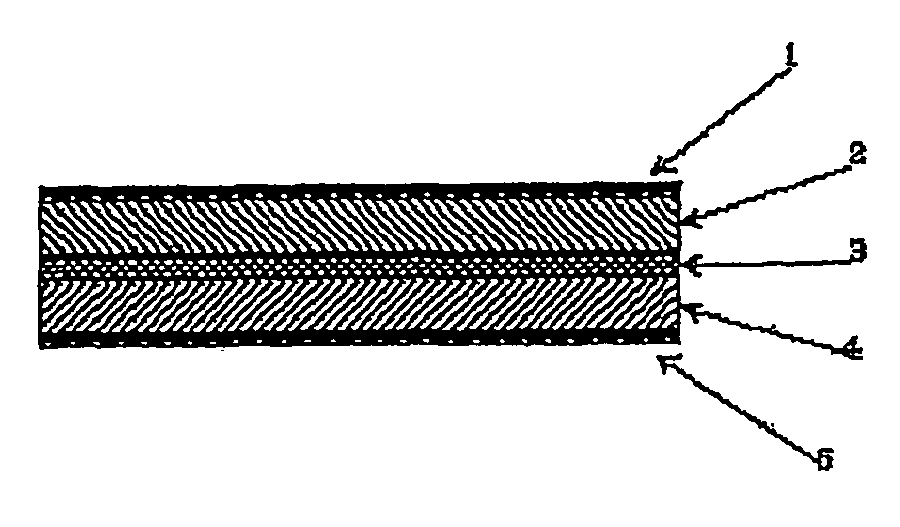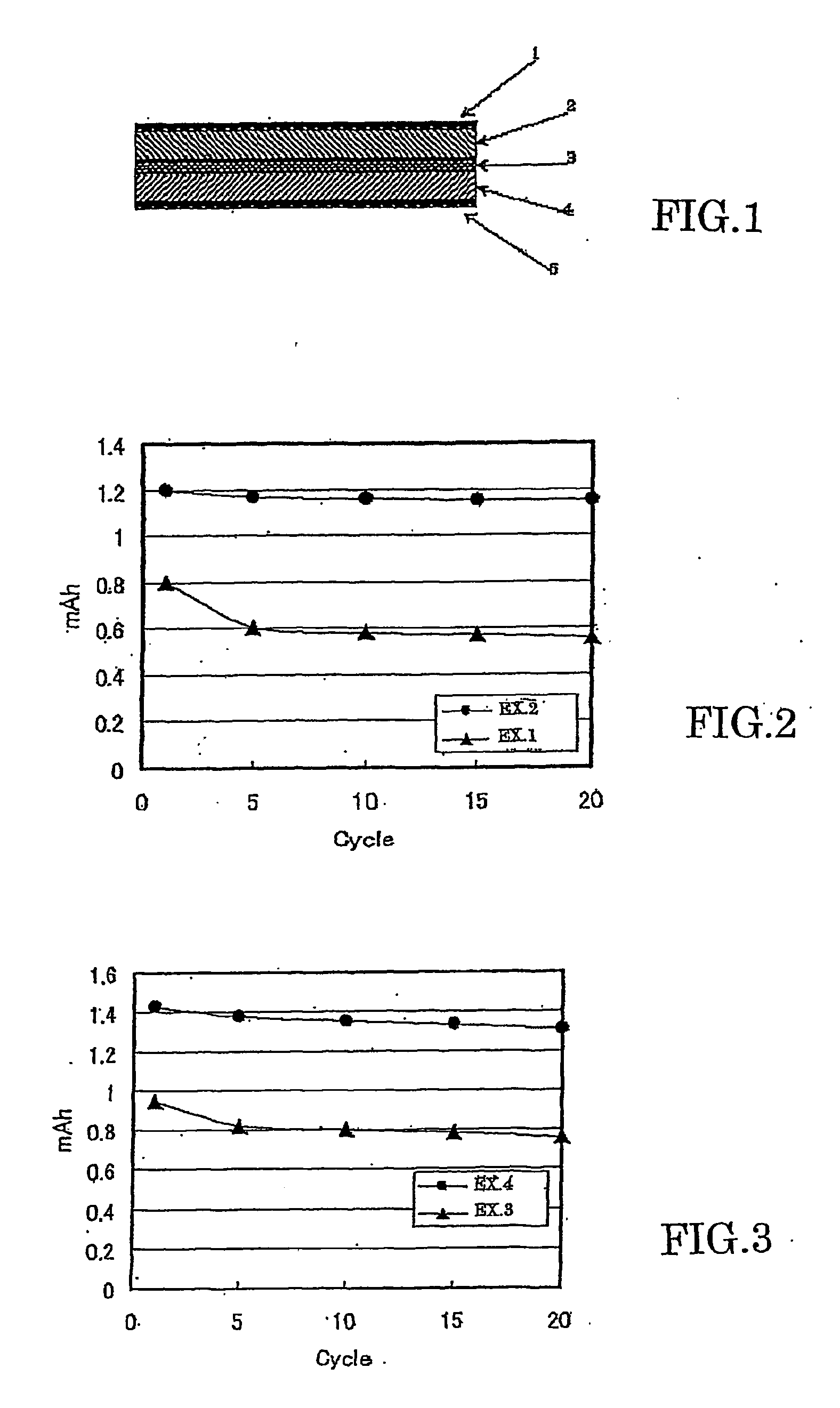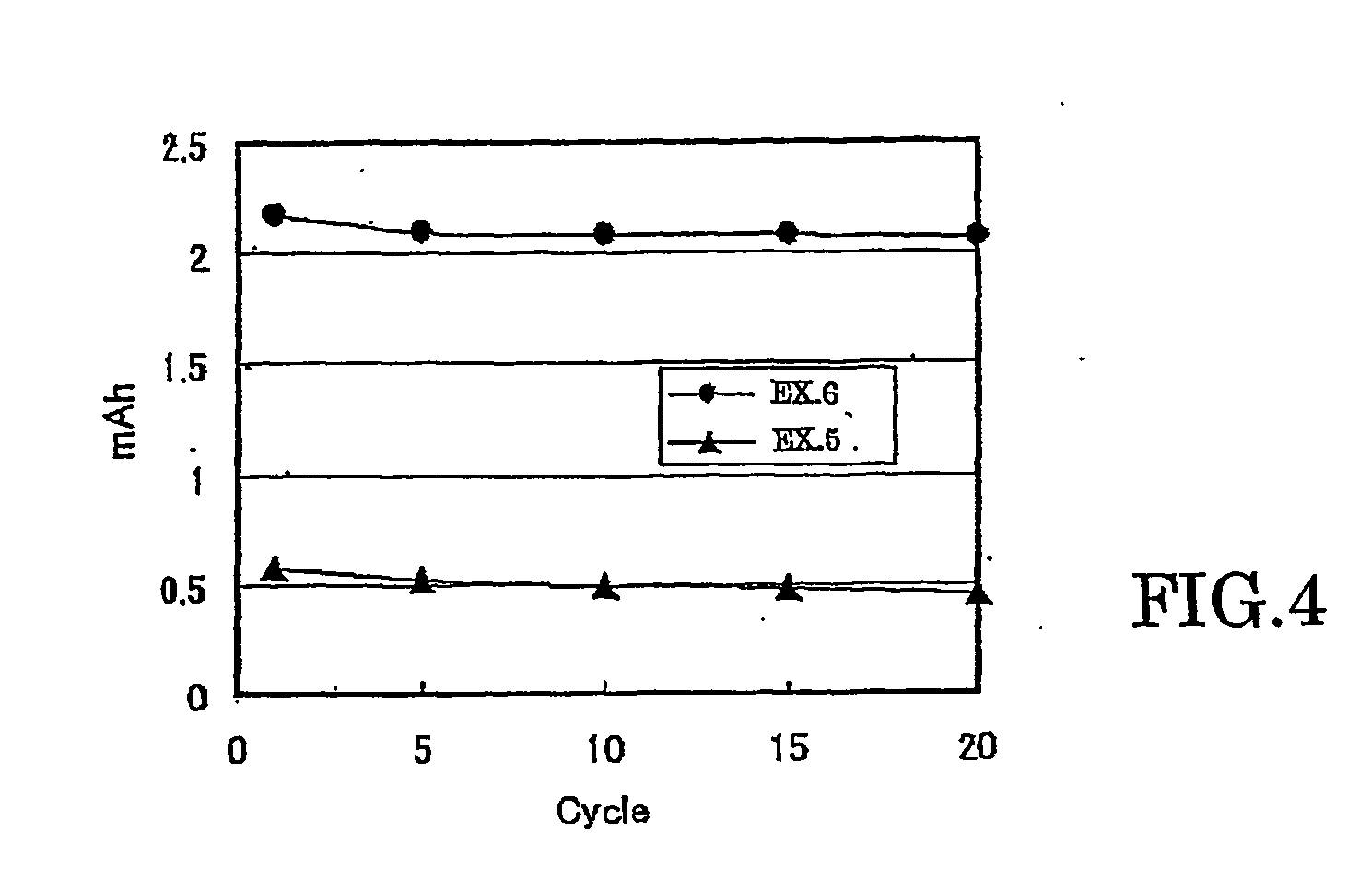All solid lithium ion secondary battery and a solid electrolyte therefor
a solid electrolyte technology, applied in the direction of non-aqueous electrolyte cells, cell components, electrochemical generators, etc., can solve the problems of short circuit between the positive electrode and the negative electrode, deterioration of the charging-discharging characteristic of the lithium ion secondary battery, and significant reduction of lithium ion conductivity in the solid electroly
- Summary
- Abstract
- Description
- Claims
- Application Information
AI Technical Summary
Benefits of technology
Problems solved by technology
Method used
Image
Examples
example 1
Preparation of Lithium Ion Conductive Glass-ceramics
[0087] Raw materials of H3PO4, Al(POs)3, Li2CO3, SiO2 and TiO2 were weighed and mixed uniformly to make a composition of 35.0% P2O5, 7.5% Al2O3, 15.0% Li2O, 38.0% TiO2 and 4.5% SiO2 expressed in mol % on oxide basis. The mixture was put in a platinum pot and was heated and melted in an electric furnace at 1500° C. for three hours while the molten glass was stirred. Then, the molten glass was formed to a thin plate having a thickness of 0.3 mm by a molding machine made of stainless steel and thereafter the thin plate of glass was heated at 950° C for twelve hours for crystallization thereby to produce a thin plate made of glass-ceramics.
[0088] On the other hand, the molten glass of the same composition was dropped into flowing water to produce flakes of glass. The glass was heated at 950° C. for twelve hours for crystallization and the target glass-ceramics were thereby obtained. The flakes of glass-ceramics thus obtained were cr...
example 3
Preparation of a Solid Electrolyte
[0096] The glass-ceramics powder A obtained in Example 1 was mixed with 5 mass % of LisPO4 and the mixture was formed to pellets having a diameter of 20 mm by using a cold isostatic press (CIP). The formed pellets were sintered by using a hot isostatic press (HIP) and the sintered product was ground and polished to a solid electrolyte having a diameter of 16 mm and thickness of 0.08 mm. In sintering the pellets, liquid phase sintering was used by which LIsPO4 was melted and the glass-ceramics powder was bound by the melted LisPO4.
Preparation of a Positive Electrode
[0097] In preparing a positive electrode compound, a commercially available fluidized granulator was used. Ketjen black (average particle diameter of 40 nm) added as an electron conduction additive in an amount of 5 mass % of the positive electrode active material, the glass-ceramics powder A (prepared in Example 1) having average particle diameter of 1.5 μm added as an ion conduction...
example 4
[0103] Instead of the glass-ceramics fine powder A used for the positive and negative electrodes of Example 3, the slurry B of the glass-ceramics fine powder obtained in Example 1 was added to a positive electrode active material and a negative electrode active material in an amount of 5 mass % respectively of the positive electrode active material and the negative electrode active material. A battery was assembled in the same manner as in Example 3 in all other respects. A charging-discharging measurement was conducted under the same conditions as in Example 3. Initial discharging capacity was 1.43 mAh and discharging capacity after repeating of 20 cycles was 1.3 ImAh which was 92% of the initial discharging capacity.
[0104] Change in the discharging capacity accompanying the charging-discharging cycle of Examples 3 and 4 is shown in FIG. 3. In Examples 3 and 4, the initial discharging capacity was large and deterioration in the capacity accompanying the charging-discharging cycle ...
PUM
| Property | Measurement | Unit |
|---|---|---|
| particle diameter | aaaaa | aaaaa |
| thickness | aaaaa | aaaaa |
| thickness | aaaaa | aaaaa |
Abstract
Description
Claims
Application Information
 Login to View More
Login to View More - R&D
- Intellectual Property
- Life Sciences
- Materials
- Tech Scout
- Unparalleled Data Quality
- Higher Quality Content
- 60% Fewer Hallucinations
Browse by: Latest US Patents, China's latest patents, Technical Efficacy Thesaurus, Application Domain, Technology Topic, Popular Technical Reports.
© 2025 PatSnap. All rights reserved.Legal|Privacy policy|Modern Slavery Act Transparency Statement|Sitemap|About US| Contact US: help@patsnap.com



